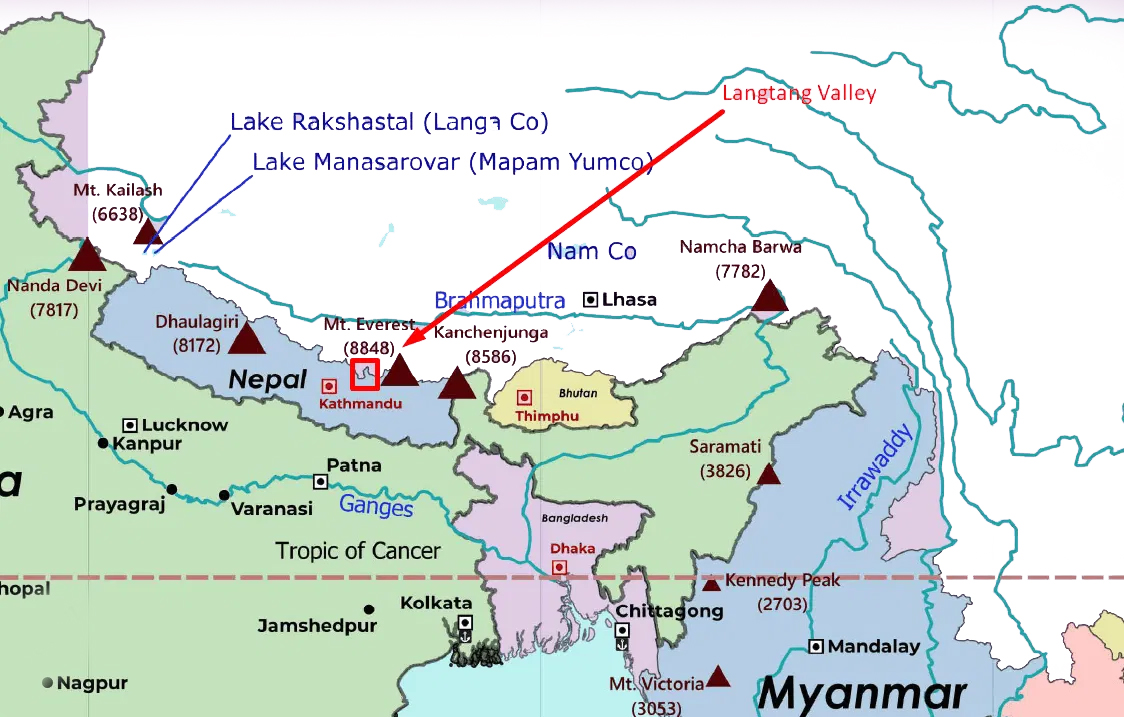Context:
Glaciologists and local communities have mourned the loss of Nepal's Yala glacier, which has shrunk by 66% since the 1970s, making it one of Nepal's first glaciers to be declared dead. Located in the Langtang Valley, the glacier has retreated 784 meters since the 1970s and was once a crucial site for glaciological training and cryosphere research in the Hindu Kush Himalayas (HKH).
Glacier Funeral: A Symbolic Ceremony:
A glacier funeral was held on May 12, 2025, to mark the rapid disappearance of the Yala glacier due to climate change. This event follows in the footsteps of similar ceremonies held for other glaciers, including :
· Okjokull Glacier, Iceland (2019): The world's first glacier funeral
· Pizol Glacier, Switzerland (2019): A glacier declared dead due to rapid melting
· Clark Glacier, US (2020): Another glacier lost to climate change
· Ayolaco Glacier, Mexico (2021): A glacier that disappeared due to rising temperatures
Consequences of Glacial Loss:
The loss of glaciers like Yala has severe consequences for the environment and human societies. Some of the key impacts include:
· Accelerated Global Warming: Reduced glaciers lead to less albedo effect, increasing heat absorption and exacerbating global warming.
· Sea Level Rise: Melting glaciers contribute to sea level rise, with nearly 2 cm of global sea level rise attributed to glacier melting since 2001.
· Disrupted Water Cycles: Glaciers store nearly three-quarters of Earth's freshwater, and their rapid melting threatens water security and endangers biodiversity.
· Natural Disasters: Glacier loss increases the risk of Glacial Lake Outburst Floods (GLOFs) and avalanches, posing a threat to local communities and ecosystems.
Impact on Local Communities:
The loss of the Yala glacier also has significant implications for local communities, including:
· Water Security: Changes in glacier melt patterns affect water availability, threatening the livelihoods of people dependent on these water sources.
· Ecological Stability: Glacier loss disrupts ecosystems, leading to changes in biodiversity and potentially devastating consequences for local wildlife.
· Cultural Significance: Glaciers like Yala hold cultural and spiritual value, and their loss is a poignant reminder of the impact of climate change on human societies.
Initiatives for Glacial Conservation
Global Initiatives:
· UN's International Year of Glaciers’ Preservation (2025) and World Day for Glaciers (March 21).
· UNESCO's Intergovernmental Hydrological Programme.
· IUCN’s Himalayan Adaptation Network.
· WWF’s Living Himalayas Initiative.
Indian Efforts:
· National Mission for Sustaining the Himalayan Ecosystem.
· Network Programme on the Himalayan Cryosphere.
· Himansh Research Station, monitoring glacial dynamics in the Indian Himalayas.
· INCOIS GLOF Alerts, offering real-time monitoring of glacial lake risks.
Conclusion:
The declaration of the Yala Glacier as "dead" serves as a stark reminder of the far-reaching consequences of climate change. As one of Nepal's most studied glaciers, Yala's rapid disappearance highlights the urgent need for global action to mitigate the impacts of global warming.







